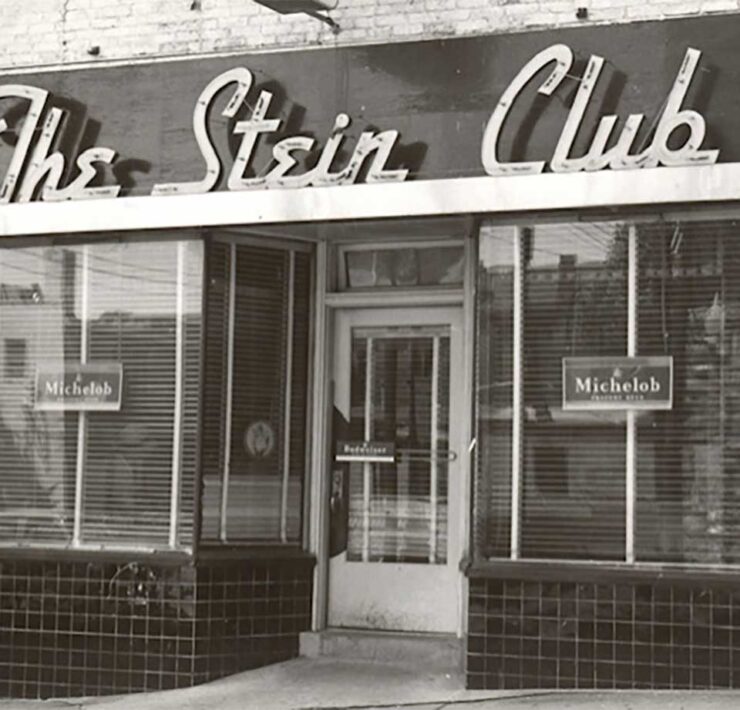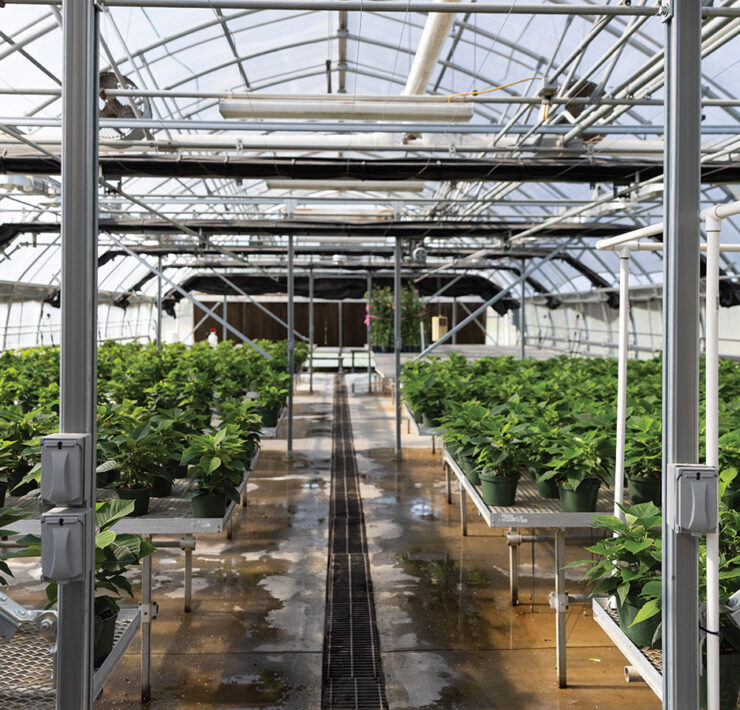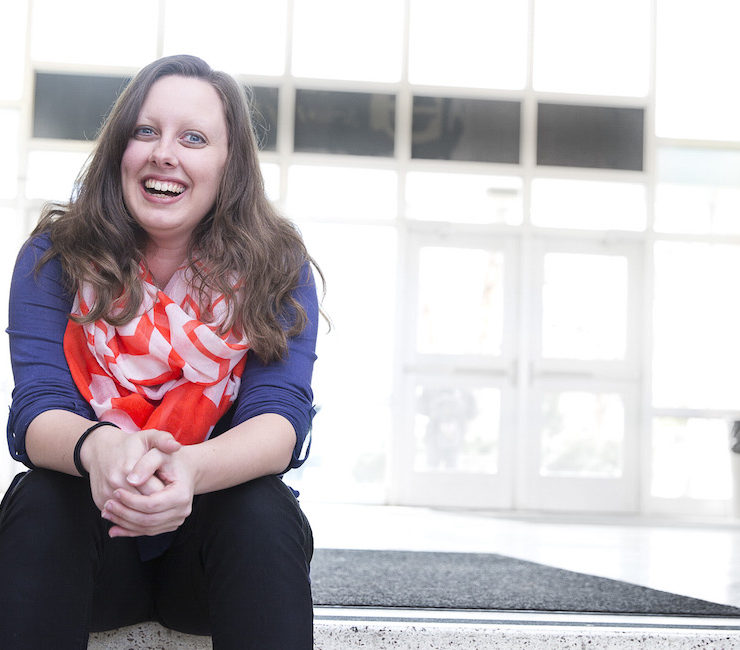One Bloody Business
Each fall, thousands of students, faculty, staff and community members flock to the Hearnes Center to donate blood at the annual University of Missouri Homecoming Blood Drive — one of the largest blood drives in the world.
Last year’s drive, along with the spring Greek Week blood drive, provided more than 7,400 pints of blood for the American Red Cross.
It is said that the best gifts come from the heart — literally, in this case — but it is also said that nothing is free. Collecting and maintaining blood is expensive. There are goals to be met, contracts to fulfill, volume discounts to utilize and reimbursements to be made. And eventually, patient bills to be paid.
The bottom line, though, is not measured in earnings; it’s measured in lives saved. This is the business of blood.
Staffing donations and reaching goals
Although other blood product providers, including Community Blood Center, Mississippi Valley Regional Center and Community Blood Center of the Ozarks, operate in the mid-Missouri region, the American Red Cross provides blood products to more than 2,700 hospitals and transfusion centers across the country — 40 percent of the nation’s supply— and nearly 80 facilities in its Missouri-Illinois Blood Services region.
Its Columbia Donation Center organizes and staffs blood drives in 33 counties, with four or five mobile units deploying from its 1511 S. Providence Road office each day to collect blood in Kirksville, Jefferson City, Sedalia and more, according to American Red Cross Spokesman Dan Fox. In fact, there are approximately 60 staff members in Columbia and Jefferson City alone, he says.
Three to six months prior to a blood drive, sometimes even a year or more, donor recruitment representatives such as Craig Jackson begin to fill their calendars. Although he says he has a number of accounts to rely on and will schedule well in advance, he is also responsible for garnering new accounts.
“It’s very much like any other sales position,” Jackson says. Once a date for the drive is set, Jackson and the coordinator from the business or group hosting the drive will set a time.
“The time of day is up to the group because they know the population better than I will,” Jackson says. He does, however, provide suggestions based on experience. For example, if a factory has a day and night shift, he would recommend setting the blood drive from 2 to 6 p.m. A church, he would suggest, should host the drive right after its service.
Once those details are set, it’s time to determine goals. Fox says there are many factors included in setting goals: dates, size of facility, time of day, previous drives and season. Winter is often a more difficult time of year, Fox says, because people are busy with the holidays, there are more opportunities for cancellations due to inclement weather, and it is also cold and flu season.
Incentives also play an important role, Jackson says. He estimates that between one-fifth and one-fourth of his accounts offer some sort of incentive for donating blood. Although these incentives must be approved by the Red Cross, in accordance with FDA guidelines, some common incentives a company might offer to presenting donors include paid time off for donating so many times within a year, a tie-in with the company wellness program or raffles for gift cards, tickets and more.
The amount of supplies, staff and other resources depend greatly on these goals. Jackson says, on average, a four-hour drive expected to collect 25 units of blood would need five staff members. Even still, those numbers vary depending on the type of drive. For example, a drive at a high school may require more staff because of a higher rate of deferrals.
Meeting demand
Although local blood drives first meet local needs, those blood donations can also be sent across the country, particularly when goals aren’t met. According to the 2011 National Blood Collection and Utilization Survey, the total number of collections has decreased nearly 10 percent from 2008 to 2011.
“Meeting individual blood drives’ goals doesn’t impact supply to hospitals,” Fox says. “We can always rely on the shelves of our neighboring regions.” But unmet goals do add burden to other drives, he says.
According to Anita Smith, the laboratory director at Moberly Regional Medical Center, there are fewer direct effects in times of abundance than in times of scarcity.
“If something has happened where there aren’t as many blood drives, we’ll see notifications that supplies are running low and the request that more blood drives be held,” she says. “We see more of an effect when there hasn’t been some huge blood drive.”
When blood is successfully donated within the Columbia Donation Center’s 33 counties, it’s taken to a Red Cross facility, most likely in St. Louis, where the Red Cross has one of its five main national facilities. There it is broken down into various components such as red blood cells, plasma, platelets and cryoprecipitated antihemophilic factor, or AHF. It’s tested for diseases such as HIV, syphilis and hepatitis. In total, this process can take two to three days. It’s then either shipped or stored at the facility, depending on demand.
The Columbia facility can hold up to 400 units of blood and acts as a distribution point for local hospitals and transfusion centers.
Based on costs accrued during the collection, testing and distribution — including everything from staff salaries to facilities, vehicles and equipment — the Red Cross sets its cost recovery fee, or the price hospitals and transfusion centers pay for blood products.
Providing services
Not all hospitals and transfusion centers utilize the Red Cross. Many have service contracts with other providers, depending on what exactly that facility is looking for in a blood product provider.
For example, the University of Missouri Health System has had contracts with the Red Cross for many years, according to Derek Thompson, media relations coordinator. Not only is it essential that the blood provider meets its need for the type and quantity of blood products, Thompson says, but a local distribution site within the city to allow for immediate deliveries is also important.
Boone Hospital Center, as a part of BJC HealthCare System, also utilizes the American Red Cross, according to Jacob Luecke, media relations specialist. Moberly Regional Medical Center, also contracted with the Red Cross, made its selection in large part due to location.
“Turnaround time is much better,” Smith says. Also key: being able to meet demand and offer technical consultation if and when questions arise.
Diana Inman, laboratory director of Cooper County Memorial Hospital, for which Boyce & Bynum has provided lab management since 1992, says CCMH receives its blood from Community Blood Center because the amount charged for blood products is not based on quantity.
“Cooper County has a low utilization rate, and so the number of units stored at Cooper is relatively small,” she says. “Other blood providers are charged less per unit for a higher number of units.”
In addition to cost per unit, technical support for difficult cross-matches and availability of product also top CCMH’s list when determining a supplier.
According to Dan Fox, other than larger hospital groups requesting a higher quantity of blood products, there are “no major differences in working with hospital groups of varying sizes.” However, on that same note, Fox says “volume, number of deliveries and other variables are factored into the service contract.”
According to the National Blood Collection and Utilization Survey, hospitals on average paid $225.42 per unit of red blood cells, around $57 for plasma, $535.17 for platelets and $62.41 for cryoprecipitate in 2011, the most recent year of completion for that survey.
Setting requirements
The number of required units of blood for the MU System (150), Boone (75), Moberly (30) and Cooper (12) depend on a number of factors.
Smith, with Moberly Regional Medical Center, says its 30 units are based on historical usage and are annually reviewed by medical staff. According to Luecke with Boone, the blood type ratio of its 75 units depends on general population percentages.
“The most common blood types are O positive and A positive, so those are the types we stock at the highest volume,” he says. But he says Boone Hospital Center also accounts for patient population; if they have more patients with a certain blood type, those circumstances will affect the ratio of blood types in inventory.
Blood for each of these hospitals is delivered and processed in a similar manner. For Boone, an American Red Cross courier delivers the products to the hospital laboratory in the basement of Boone Hospital’s south tower. The MU Health System receives its blood to two labs, one within University Hospital and the other, Women’s and Children’s Hospital.
Deliveries are received daily — often more than once a day, in the case of the MU Health System.
Once received, the blood products are checked for quality, entered into an inventory database and stored in a secure area with limited access, refrigerated between 33.8 and 42.8 degrees F. Regulatory agencies require that blood bank refrigerators have an alarm system in case temperatures were to deviate from the appropriate range.
“If the temperatures are ever out of range, the blood products are moved to a different refrigerator to avoid loss of inventory,” Thompson says.
For some medical groups that offer infusion services, such as Jefferson City Medical Group, it isn’t practical to maintain an onsite blood bank.
“When we do have a patient in need of a blood transfusion, we send them to a local hospital where special processes are in place to ensure the well-being and safety of the patient,” says Emily Mantle, community relations coordinator.
Every day, the American Red Cross calls Moberly Regional Medical Center to ask if it needs any units.
“If we’ve used any of our supply, we’ll order replacements,” Smith says. “If we had a massive transfusion in the middle of the night, we can always call them and have our supply replenished more quickly.” This system of daily inventorying is similar across the board — and all must watch out for expiration dates.
The most common type of red blood cell unit expires after 42 days, with platelets lasting only five days. According to Thompson, “the time a unit stays in the blood bank varies greatly, depending on need.”
Even hospitals that perform fewer transfusions have a system to efficiently utilize blood products. Smith says Moberly Regional Medical Center has a program for which blood products 10 days from expiration are rotated to the MU Health System “because their transfusion rates are a lot higher than ours.”
“Those blood products can be used there, and ours is replenished with a longer out-date product,” Smith says.
Serving patients
Some of the most common patients in need of blood products include people with gastrointestinal bleeding, oncology and surgery patients and patients in the neonatal intensive care unit.
When a patient needs a blood transfusion, lab professionals check the patient’s blood type and conduct an antibody screen and cross-match test. Either a nurse will go to the lab and check out necessary blood products, or, in the case of University Hospital, Thompson says, blood bank personnel deliver the products to the emergency room or operating room or utilize a pneumatic tube system (similar to those in the drive-thru at banks).
“We always try to give type-specific blood products,” Smith says. “In an emergent situation, if we don’t have the time or know their history, we will give O negative, but that’s not typically the way we like to operate.”
O negative is a more rare blood type — it’s a universal donor — so though it’s safe in an emergency, because it is also a rarer type, it’s a harder product to keep on shelves.
“We don’t just want to give those out; we want to save them for circumstances that really warrant their use,” Smith says. “Something most people might be surprised to know is that we really prefer not to transfuse blood at all if possible.” It’s possible for patients to have a transfusion reaction against the donor’s body, as well as develop antibodies that might make it harder to receive blood in the future.
In cases when a patient may have multiple antibodies, antigen negative products may need to be delivered from the Red Cross reference lab in St. Louis, says Thompson with the MU Health System. Couriers for both the Red Cross and Community Blood Center can deliver 24/7.
But for outlying hospitals such as Cooper County, critical needs are assessed.
“If the transfusion can be delayed for a day or so, a blood sample is sent to Boone Hospital or Community Blood Center…to find suitable units for this patient,” Inman says. If it can’t wait, the patient will be transferred to either Boone Hospital or the university.
And if it really can’t wait? “We’ll give them the unit that is most compatible,” Smith says.
Determining cost
Even though blood is given freely, the cookies, juice and T-shirts donors receive aren’t free. Neither are the staff, tests and transportation. Those are the hard costs to the blood product provider that determine how much hospitals need to reimburse for each product.
However, the maintenance and administration of blood products also don’t come free — and they certainly don’t come standard.
Luecke: “As will all hospital charges, charges patients receive for blood vary depending on insurance carriers or payment methods.”
Inman: “Reimbursement rates are based on standard fee schedules.”
Thompson: “Charges for blood products are based on the actual cost of the product, plus the costs of storage, monitoring and distributing the blood products.”
The University of Missouri Health System does, however, use Medicare fee schedules as a guideline in determining the charges, as does Cooper County Memorial Hospital. The 2013 Medicare fee schedule, for example, sets the price on whole blood at $169.83; red blood cells, $151.79; platelets, $91.61; and plasma, $78.71.
“Medicare, Medicaid and the insurance companies reimburse at standard rates for the testing that is done and the procedures that are performed,” Inman says. “The reimbursement rates are less than the amount billed. The amount reimbursed does not cover all of the costs, but to be classified as an acute care hospital, you must have a blood bank and stored blood available to meet the needs of patients.”
The 2013 fee schedule also sets lab procedures. On the low end, it’s $9.67 for blood typing. On the other, it’s $34.30 for blood freeze or thaw. The procedures range drastically from $260.44 for a transfusion to $950.65 for apheresis (when particular constituents of the blood product are removed) and $2,888.70 for some forms of apheresis and photopheresis (a form of apheresis when blood is treated with photoactivable drugs).
“There are a lot of expenses associated with testing, processing, transporting and storing blood,” Luecke says. “People often assume that blood is very inexpensive, or free, because donors voluntarily donate the blood.”








